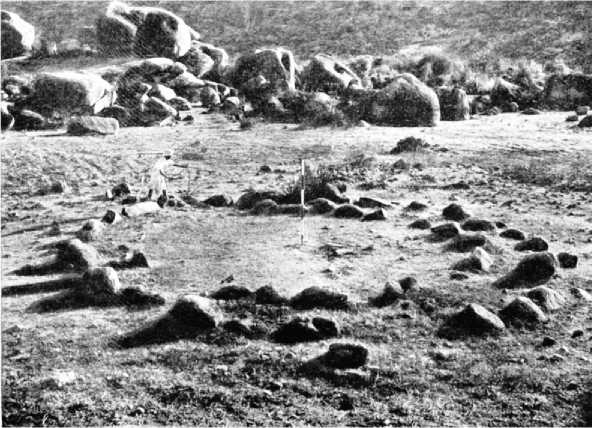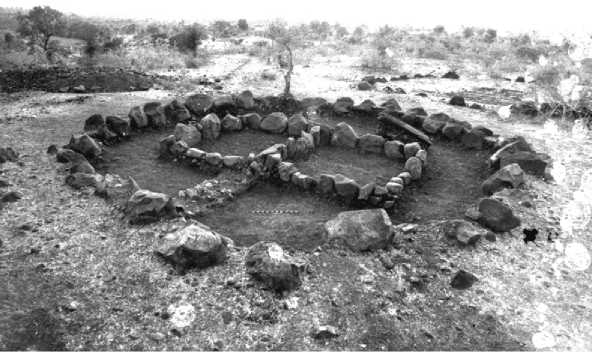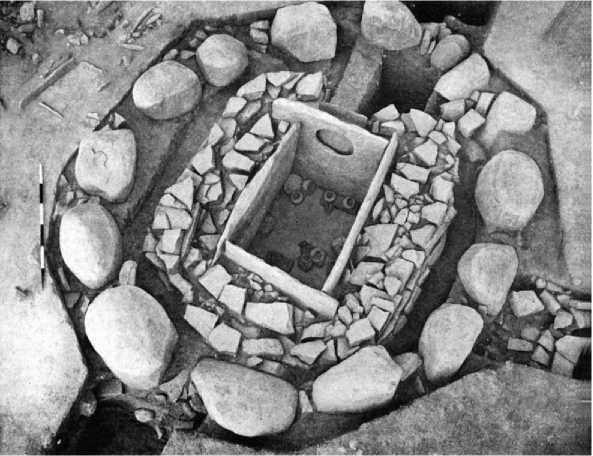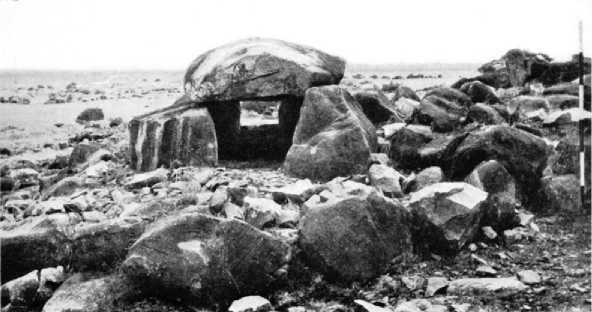One of the most crucial aspects in building up a coherent picture of any archaeological culture period is a substantial dating base. Although after the advent of C14 dating method, the picture for the period with which we are concerned has given a broad understanding of the time sequence involved in it;

Figure 1 Pit burial with a ramp and enclosed by cairn stone circles. Brahmagiri (Chitradurga district, Karnataka, India). Courtesy: Archaeological Survey of India.

Figure 2 Passage chamber burial with cairn packing and boulder circle. Bhagimohari (Nagpur district, Maharashtra, India). Courtesy: Deccan College Postgraduate and Research Institute.
Nevertheless, it is far from satisfactory. The observation becomes comprehensible when one looks at the absolute dates available for these sites. For a total of more than 2000 known sites of Megalithic culture of South Asia, absolute dates are available only for about 30 sites. In very few cases, dates have been obtained both for the Megalithic habitational layers and the adjacent cemetery area. On the basis of available C14 dates, the dates/chronological range for the following geographical regions are as follows: Gufkral, Kashmir valley (c. 1888-1671BC), Gagrigol, Kumaun area (c. 2666-2562 BC), Vindhyan region, Mirzapur area (c. 1300 BC), Rayalaseema plateau, Kalyandurg area (c. 1880-1595 BC), Upper Tungabhadra valley, Davanagere area (c. 1440-930 BC), Cuddapah basin, Tadpatri area (c. 1375-1230 BC), Upper Tungabhadra
Valley, Hirekerur area (c. 1385-825 BC), Tambraparani plain, Palayankottai area (c. 905-780 BC), Nagpur plain, Nagpur area (c. 800-405 BC), Javadi Hills, Vellore area (c. 425-155 BC), Baramahal, Tirupputtur area (c. 805-25 BC), Upper Cauvery valley (c. 225 BC), Krishna-Tungabhadra doab, Kurnool area (c. 1670 BC-AD35), Warangal plateau (c. 185BC-AD35), Upper Krishna valley (c. 160BC-AD70), Kongunad upland, Tiruppur area (c. 300BC-AD100). Considering the limited information on absolute chronology for such a vast area, the difficulties in building up a coherent regional chronological sequence are innumerable.
Although it is hazardous to make precise generalizations about the time sequence of this period at regional levels, it is obvious from the available data that the total span of this culture extends for more

Figure 3 Portholed chamber burial with cairn packing and boulder circle. Brahmagiri (Chitradurga district, Karnataka, India). Courtesy: Archaeological Survey of India.

Figure 4 Portholed chamber burial with cairn packing and boulder circle. Sankarapuram (Chengalpattu district, Tamilnadu, India). Courtesy: Archaeological Survey of India.
Than 1200 years. Its beginning can now be securely pushed back to around c. 1500 BC. The terminating phase of this culture seems to be around c. 300 BC, as the evidence of script, coinage, and growth of urban centers is seen (although not uniform throughout South Asia) from this time onwards. Obviously, the ‘megalithic’ tradition continues in later centuries also and it forms a part of early historical cultures in the beginning.




 World History
World History









